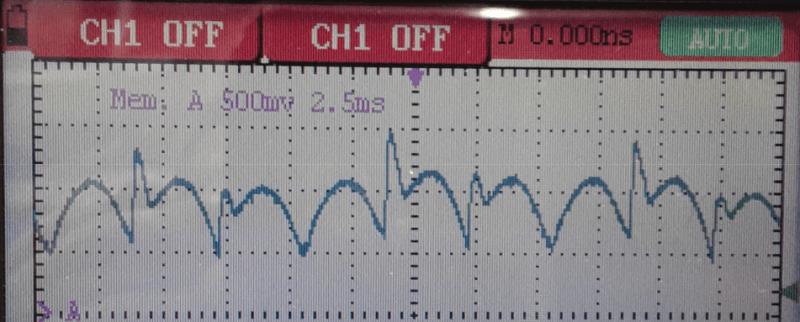Hello all
Can anyone here in the forum explain the reason for the steep peaks in this current curve measured in a dc drive (ASEA Tyrak8) at high load. The fault was detected after a disconnect for overcurrent, from the drive's electronic overload protection. The system could be restarted shortly after and then apparently operating normally. The current limit was then adjusted to In. DC-motor runs fine as before. Have checked trigger pulses, but not on thyristors, too dangerous during operation. Current measurement is from the drive's current transformers in the 3 phases. The peaks in the current curve is only present at high load. The customer did not want to spend time on troubleshooting at the time as the system was working satisfying and also was hard to do without.
Can anyone here in the forum explain the reason for the steep peaks in this current curve measured in a dc drive (ASEA Tyrak8) at high load. The fault was detected after a disconnect for overcurrent, from the drive's electronic overload protection. The system could be restarted shortly after and then apparently operating normally. The current limit was then adjusted to In. DC-motor runs fine as before. Have checked trigger pulses, but not on thyristors, too dangerous during operation. Current measurement is from the drive's current transformers in the 3 phases. The peaks in the current curve is only present at high load. The customer did not want to spend time on troubleshooting at the time as the system was working satisfying and also was hard to do without.

